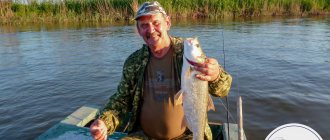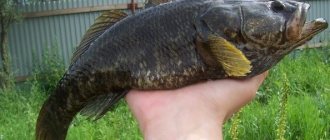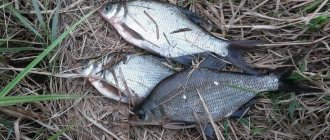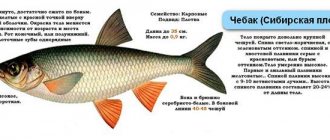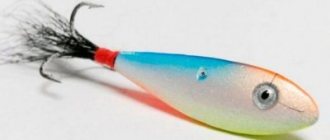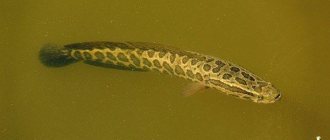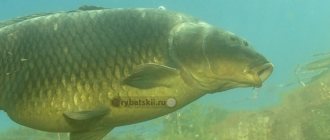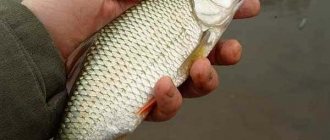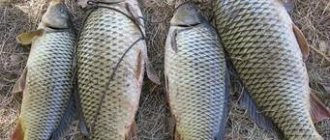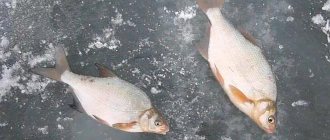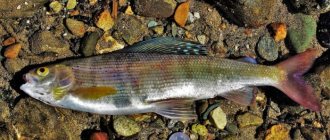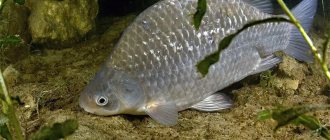Grayling is a predatory fish that has an oblong body, bluish or greenish-silver on the sides, with black spots on the back. Reaches a length of 50 cm and a weight of 2.5 kg.
The main diet of this fish can be considered: animal food (worms, caddis flies and insect larvae), insects (botflies, various beetles, mayflies) and juvenile fish. And depending on the time of year, they choose bait, and then the gear to go with it.
Gear selection
The main habitats of grayling can be called the north of the European part of Russia, the basins of the Baltic and White seas, in lakes such as Onega, Ladoga and Imandra. Found in the upper reaches of the Dnieper and Volga. Prefers cold, fast-flowing rivers, such as: Chusovaya, Vishera, Berezovaya, Kolva, Uls and their tributaries.
The choice of gear that would be more appropriate to use for grayling fishing depends on the time of year, weather conditions, and the characteristics of the reservoir (lake, large or small river).
In early spring (April-May), fish are caught using animal food, so fishing is practiced with a float rod and bottom tackle. With the appearance of caviar and juvenile fish (May-June), they begin to fish with spinning rods with small rotating spoons. And when there is a mass emergence of insects (mid-June), they switch to boat and fly fishing. And then until late autumn, grayling is successfully caught using all the gear listed above.
Catching grayling with a float rod
They begin to fish with a float rod immediately after the rivers open and the water becomes clear. The most common way is through wiring. It has become especially relevant recently with the advent of inertia-free reels. The following baits are used for float tackle: caddis flies, worms and various insects (mayflies, grasshoppers, flies, gadflies and horseflies).
Float tackle is selected depending on the place and method of fishing. For fishing from the shore - casting - use heavier tackle. This is necessary in order to deliver the bait to the desired fishing spot. A rod 3.5 to 4.5 meters long with rings. A small inertia-free reel on which a fishing line with a diameter of 0.2–0.28 mm is wound.
A float weighing 3–5 grams, depending on the casting distance. You can use replaceable leashes made of fishing line with a diameter of 0.15–0.17 mm - this is important when catching larger, and therefore more cautious fish.
Fishing for grayling while fishing is considered the calmest, but you need to remember that after catching 2-3 specimens, you need to change the place of fishing and it is advisable to go downstream, since the frightened fish goes up.
Seasonal behavior of grayling
It is very difficult to catch fish in winter due to its unpredictable behavior. For fishing, use a fishing rod with a variety of attachments. At the same time, you need to properly distribute the bait. A jig or small pieces of fresh fish, which are scattered generously into the holes, can be used as bait. The best period for grayling fishing is spring. Active fish biting has been noticed since March 15, when the reservoirs have not yet been opened. In the spring it is possible to fish with an overlap, plumb line and wire. The bait, in this case, is various insects of artificial origin, worms, larvae and maggots.
Excellent fishing results occur in the summer months of the year, especially in July, when spawning has completely passed. During this period, reservoirs are overflowing with insects and individual fish go hunting. In August it is best to use a spinning rod. As for autumn, the most important thing here is to have time to go fishing before the ice sets in. With the onset of cold weather, grayling bites well on worms and insect larvae. In the fall, it is recommended to look for places near the river rapids and below the rifts for biting. In November, it becomes more difficult to catch fish, as they go deeper.
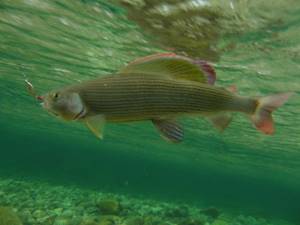
Fishing for grayling using a spinning rod
Grayling begins to actively fish for spinning rods from mid-summer, when juvenile fish, various beetles and larvae appear in the river.
The length of the spinning rod depends on the fishing conditions and therefore it can vary from 2.1 m to 2.7 m. The test is usually 0 - 7 grams, since rotating spoons are used for catching grayling: 0-1 numbers of different colors and always with an “edge” on hook. The most common and most catchy “spinners” are considered to be Meps spinners - Aglia - copper, white and black with red specks.
It is better to wind a braided cord with a diameter of 0.08 - 0.10 mm on an inertia-free reel, but fishing line with a diameter of 0.2 - 0.28 mm is also suitable. The use of a cord makes the spinning tackle more sensitive, but also more noticeable. But when the water is a little cloudy, it has virtually no effect on the bite. When the water is very muddy, grayling stops pecking and moves into cleaner tributaries.
When searching for grayling, fishing all the designated places using a spinning rod, you must not forget that this gear can be tempted not only by chub and perch, but also by pike, which can bite the line if you fish with it without a leash. And the leash, in turn, can scare away cautious fish.
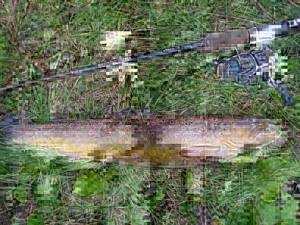
Fly fishing
Fly fishing for grayling is considered the most effective. This type of fishing can be suitable for both professional fishermen and beginners. For the classic version of fishing, you should prepare your flies and decide whether your casts will be long or short. When fishing, you need to constantly monitor the position of the fly; it should float strictly with the flow, without slowing down the fishing line or cord. Otherwise, the grayling may get scared and the fishing will be doomed to failure. The fish prefers to grab bait that is on the surface of the water. When fishing for grayling, you can use a variety of types of flies, but it is best to give preference to those colors of flies that fly directly over the pond. The number of fish bites will depend on the choice of bait. Therefore, you should not use only one type of bait.
Catching grayling with bottom tackle
Bottom tackle for catching grayling is usually used when the fish in shallow rivers in the fall roll down to the pits. And on large rivers, such as the Angara, where the depth reaches 5 meters and the current is very fast, grayling is caught with bottom tackle all summer and autumn.
On small and medium-sized rivers they use bottom tackle - a “baler”, which consists of a rather short and rigid spinning rod equipped with an inertial reel. A multi-arm structure, which is made of steel and elastic wire with a cross-section of 0.5 mm, is tied to the end of the fishing line.
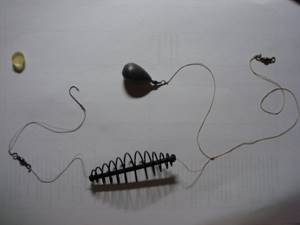
The bait for this type of fishing is artificial flies. A sinker weighing 25-30 grams is attached to a piece of wire 24-30 cm long through a loop in the middle using a fishing line 5 cm long. At the ends of this “yoke” flies are attached on leashes of the same length as the sinker. The leashes are made of fishing line with a diameter of 0.2 mm. The shape and color of flies directly depend on the fishing region.
On large mountain rivers, where there is great depth and current, they fish with a “balda”, which consists of a sinker, three leashes with flies and a huge float. All this gear is controlled using a rigid rod at least 4 meters long and an inertial reel. The float is “sliding”, quite large and heavy. When fishing, the depth is made 2 m greater than the existing one, which is why the tackle is dragged by the current along the very bottom. A bite is a change in the behavior of the float from normal, or its disappearance under water.
Description of the gear
The active use of gossip gear for grayling, which lives in cold mountain rivers, is explained by its high efficiency and ease of manufacture. Already from the name it becomes clear that fishing tackle is made by interweaving individual elements. Its basis is the fishing line of the fishing rod used. Two cigar-shaped floats are fixed on it, one of which has a larger mass for the efficiency of immersion of the tackle when casting. Also, a weighty float facilitates free passage across the water surface of the reservoir.
Along the entire length of the fishing line between the floats, leashes with flies are attached at equal distances. Their maximum quantity is 10 pieces. The use of a light float in the gossip allows you to ensure tension in the line, eliminating its sagging in a specific area of the gossip.
Catching grayling with other gear
Fly fishing
This type of gear is considered more modern and the most expensive. The gear includes a special fly fishing rod, an inertial fly reel and a special floating line. Flies are used both floating and sinking. Fishing with this gear requires a certain skill and experience, without which you cannot count on a successful outcome. It is better to develop the skill somewhere in the field and garden.
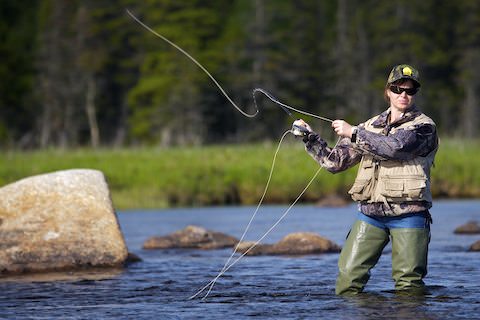
Searching for fish during fly fishing is more interesting and dynamic than when fishing with a wire. For this fishing, you definitely need a waterproof suit to walk along the river and more accurately present the bait to the detected fish. By the way, it has been noticed that fish are less frightened of a fisherman in the water than of one walking along the shore at full height.
Ship
This is the most common and inexpensive tackle that you can make with your own hands, having the appropriate drawing.
The boat board is made of board (plywood) 15 mm thick. The boat float is made of hard foam. The board of the boat is connected to its float using two curved welding electrodes with a diameter of 3–4 mm, at the ends of which a corresponding thread is cut. The board of the boat must be loaded in such a way that ¼ of it sticks out of the water, and ¾ is under water.
This can be adjusted at home in the bathroom or in a barrel, whichever is convenient for you. The assembled ship is similar in design to a catamaran. On both sides of the boat's float there are ears made of iron (tin cans), to one of which a fishing line of 0.8–1 mm is attached using a snap fastener. 10 leashes made of 0.17–0.20 mm fishing line are attached to the fishing line. Artificial flies are tied to leashes.
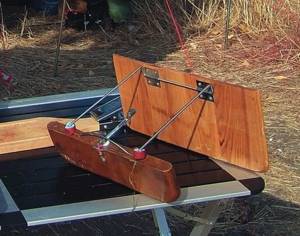
The first leash is attached at a distance of 4–5 m from the carabiner clasp and has a length of 50 cm. The second and subsequent leashes are attached at a distance of one meter from each other and the length of each subsequent leash is 10 cm longer. The longest leash is 140 cm.
The leashes are attached to the fishing line using ordinary shirt buttons. It is better to choose buttons of soft colors, since during fishing it is possible that grayling will start to grab them.
The button is kept from sliding down the fishing line by two knots tied at the front and back. Attaching the leash with a button prevents it from wrapping around the main line when landing fish. And even if the leash is wound around the fishing line, it will not be difficult to unwind it. Just pull the fly and the line will straighten out.
The reel for winding the fishing line, which is attached to the boat, can be made of boards or plywood 20 mm thick. The length of the reel can vary from 0.5 to 0.8 m. It depends on the preferences of the fisherman himself. In a reel 80 mm wide, a slot is made 10 cm long shorter than the reel itself and 30 mm wide, for attaching flies to a fishing line, which is threaded there through pre-drilled holes at a distance of 20 mm from each other.
Grayling habitats can be easily identified by the characteristic splashes of feeding fish. And so it usually stays on the reverse current, at the confluence of two currents, in whirlpools that form behind stones or other obstacles in the water.
It has been noticed that larger specimens peck at the boat either at the beginning of the riffle or at its end. When fishing with this gear, there were cases when, with one retrieve, up to 5 fish were caught on the leashes, but it was possible to pull out a maximum of two, because the rest were unhooked during fishing.
They fish with a boat (water kite) from the river bank. There are two fasteners on the boat float, to which the main fishing line is attached using a fastener, depending on the direction of the river flow.
It makes no sense to use the presented model of a boat on a river less than 20 meters wide, since it will float along the opposite bank, where the current will most likely be insufficient to pull the main fishing line with leashes with flies attached to it.
The principle of fishing is such that the boat, like a kite, but only due to the water, floats away from the shore and drags a fishing line with flies behind it, and the fisherman holds it by the fishing line wound on a reel. Due to this, the fishing line is stretched and you can “knock” the water with flies on leashes, imitating insects falling into the river.
It is better to fish in swamps, since when landing fish you need to go into the water so as not to tangle the leashes with the flies. When the fish bites, it hooks itself, so there is no need to hook it with a hand and a reel. If a fish is hooked, this can be seen by the characteristic “angle” formed on the main line.
To catch fish, you need to secure the reel on the shore, go into the water and pull out the boat along with the fish, while releasing the pulled line with leashes downstream.
The fishing line with leashes released in this way easily untangles. They fish by boat, both upstream and downstream. However, it has been noticed that fishing with the current is more successful and brings very good trophies.
Selecting a spinning rod
To catch grayling, you usually choose a light or ultralight rod with 10 grams of weight.
The choice of formation is determined by the type of bait used. A size 2000 inertia-free reel is used. The equipment of a spinning rod largely depends on the body of water where the fishing will take place.
It is recommended to choose a medium or fast action rod. This is necessary to ensure a good level of play of the bait used. The length is chosen from 2 to 2.4 m.
For fishing in rivers or streams, a light and short rod is more suitable. For it, the test load should be equal to 10 g. For this, a spinning reel with a spool having a size of 1000 is suitable. When fishing with a spinner, the test increases to 15 g.
Correct float equipment
In clean water, it is recommended to use a fishing line whose thickness is 0.19-2.0 mm . When fishing in muddy water, you can use braid with a breaking force of up to 3 kg. For the leash, fluorocarbon is used, with a diameter of 0.16-0.18 mm .
It is important to choose a suitable float. It should be taken into account that the grayling bite in the spring is weak and difficult to notice. Therefore, it is important that the float is clearly visible and has high sensitivity. However, it is also important that this fish cannot notice it. Therefore, the lower half is usually painted blue or black, and the upper half is given red, yellow or orange.
The sinker needs to slide along the line easily. Usually its shape is chosen barrel-shaped or conical.
The leash is connected to the fishing line using a carabiner or swivel.
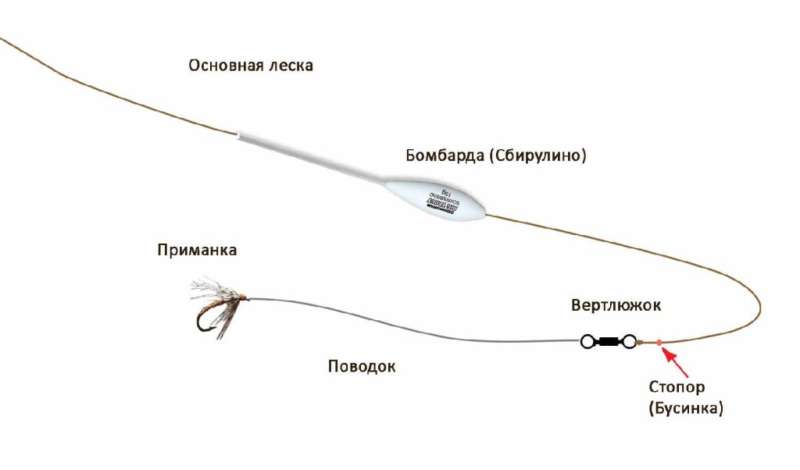
Float rig with bombard for grayling
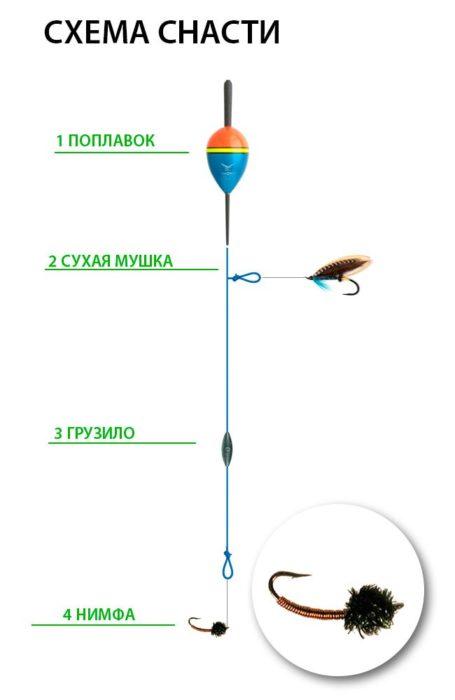
Diagram of a conventional float tackle with a fly for grayling
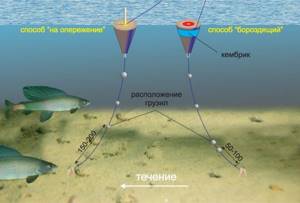
Float tackle with cambrics
Catching grayling with cambric tackle, video:
Features of winter grayling fishing
When planning to catch grayling in winter, you must remember that this fish stays near the edge of holes in fast currents, and identifying such places in winter conditions is practically very difficult.
To do this, you will have to cut an incredible number of holes and determine such a place by trial and error. But you can do it easier by noticing such places in the fall, by trees or some other characteristic features of the area.
You need to take note for yourself that in winter grayling bites at a certain period of time. You definitely won’t be left without a catch if you fish either early in the morning, before sunrise, or in the evening at sunset. However, in cloudy and cloudy weather, grayling can bite all day, but not as actively as on other days. To catch the morning fishing and prepare your gear for this, it is better to arrive at night 1-2 hours before dawn.
Now let’s decide on the basic postulates for choosing a fishing location. To do this, you need to determine the depth by making several test holes. The holes should be located as close as possible to the main stream, since this is where you can find the coveted fish. The distance between the holes should not be less than 20 cm, but their number should be sufficient so as not to miss any opportunity to catch fish.
Winter fishing for grayling is a special winter bait because it is different from summer bait. In winter, grayling bait must be given exactly where it is, otherwise there will be no bites. The most attractive can be considered “no-attachment” tin or lead jigs with a golden color. Grayling is caught in winter using a regular perch rod 30-40 cm long.
A nod 5-8 cm long is used quite hard. The line on a reel with a diameter of 0.20-0.25 mm should be at least 25 meters. You need to fish with a jig weighing 1-2 grams, shaped like a shot or a drop. On such a jig with a long fore-end, you can attach an edge of feathers by wrapping them with nylon thread. If the bite is good, the grayling will take it even without bait on such jigs, but you can also attach a jig, worm or maggot.
Also in winter they fish with summer flies by attaching them to the main line through leashes 25-30 cm long. With such gear, a load of 5-8 grams is attached to the end of the main line, depending on the strength of the current. The number of leashes and the distance between them depends on the depth, but there should be no more than three.
Bites occur sharply and unexpectedly, so you need to be on guard so as not to miss the fishing rod, and in some case not leave it unattended, not secured.
Winter lures for grayling
A winter set of bait for grayling should contain the following: jigs, nymphs, light spinners and small balancers.
We also recommend a review of winter lures for perch for vertical fishing.
Balancers and spoons are rarely used by fishermen, but large grayling are more often caught with them. Basically, they fish from the ice with various jigs, both baited and unattached.
You can use different jigs: light, lead, tin, tungsten, flat. Select the size and weight of jigs according to the strength of the current and depth.
An example of placing a jig: lower the jig to the bottom, rise by 10-15 cm, lower the bait, rise by 30-50 cm. Most often, grayling attacks the bait near the bottom.
